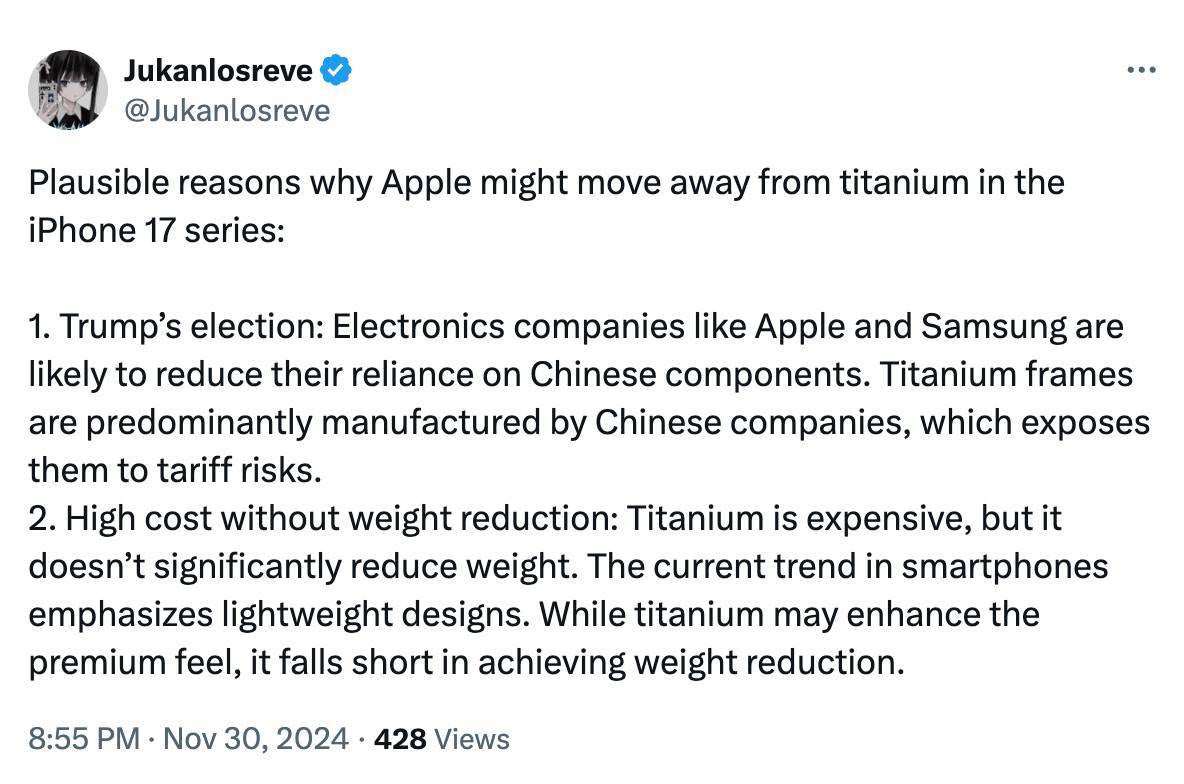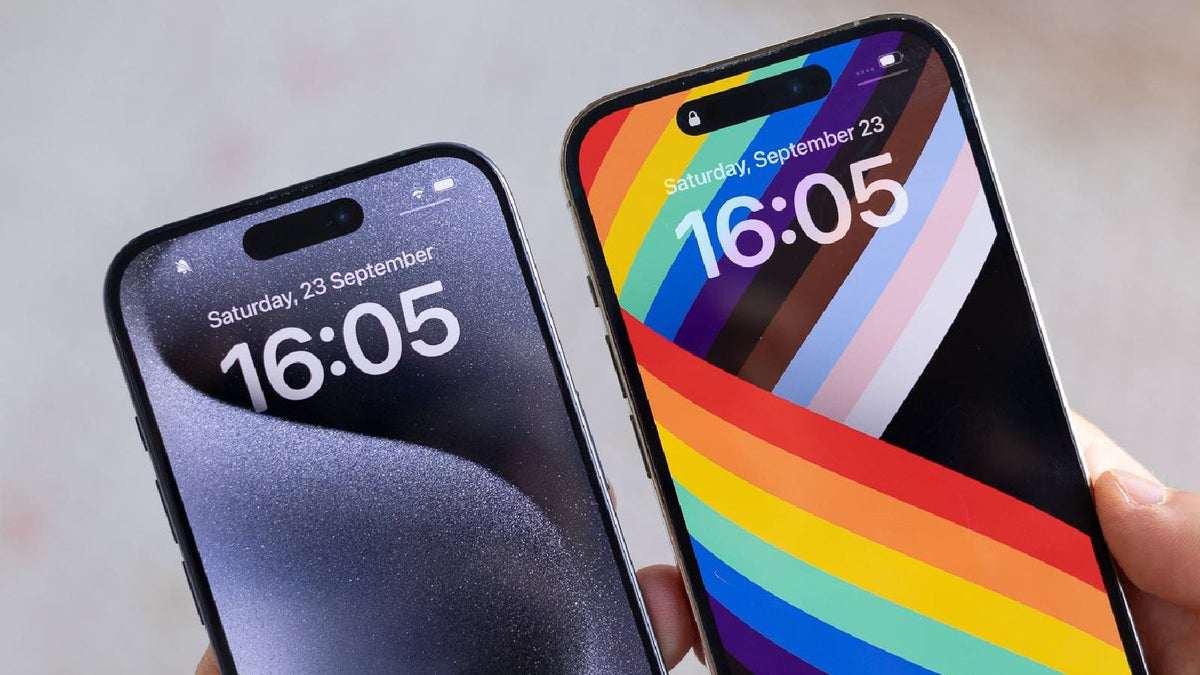Important changes on next year's high-end iPhone 17 Pro will be influenced by new President Donald Trump.
President-elect Donald Trump is poised to impose tariffs on Chinese products as soon as he takes office. Companies from both countries could be caught in the middle of a trade “war,” which is why Apple and Samsung have had to reconsider some of their previous decisions.
iPhone 17 Pro won't have a titanium frame?
A new report claims that the iPhone 17 Pro and iPhone 17 Pro Max, which will be released next year, will ditch the titanium frame, just two years after Apple first used the material when it introduced the iPhone 15 Pro. According to Jukanlosreve, Trump's re-entry into the White House is one of the reasons why not only Apple but also Samsung are likely to ditch the titanium frame.
That’s because China is the world’s largest producer of titanium. If the trade “war” between the two countries continues to escalate, the material will become more expensive. Titanium is already more expensive than stainless steel and aluminum.
Another potential reason for ditching titanium is that, despite being more expensive than stainless steel, the material doesn’t offer any significant weight advantage. For example, the iPhone 15 Pro duo with a titanium frame is only 9% lighter than the iPhone 14 Pro with a stainless steel frame.

Rumors about iPhone 17 Pro.
As the iPhone 17 Air and Galaxy S25 Slim rumors suggest, smartphone makers are now focusing on lighter products. This is also why Apple could switch to aluminum frames, the material currently used for standard iPhone models, instead of going back to stainless steel. Obviously, stainless steel is still heavier than aluminum.
However, stainless steel is more durable than aluminum, so the technology world still doesn't know whether "Apple" will prioritize weight or durability.
Another potential concern is that titanium could be the cause of the iPhone Pros overheating, and while reports of overheating have dropped significantly since the iPhone 16 Pro launched (likely due to the new cooling architecture), they haven’t completely disappeared.


